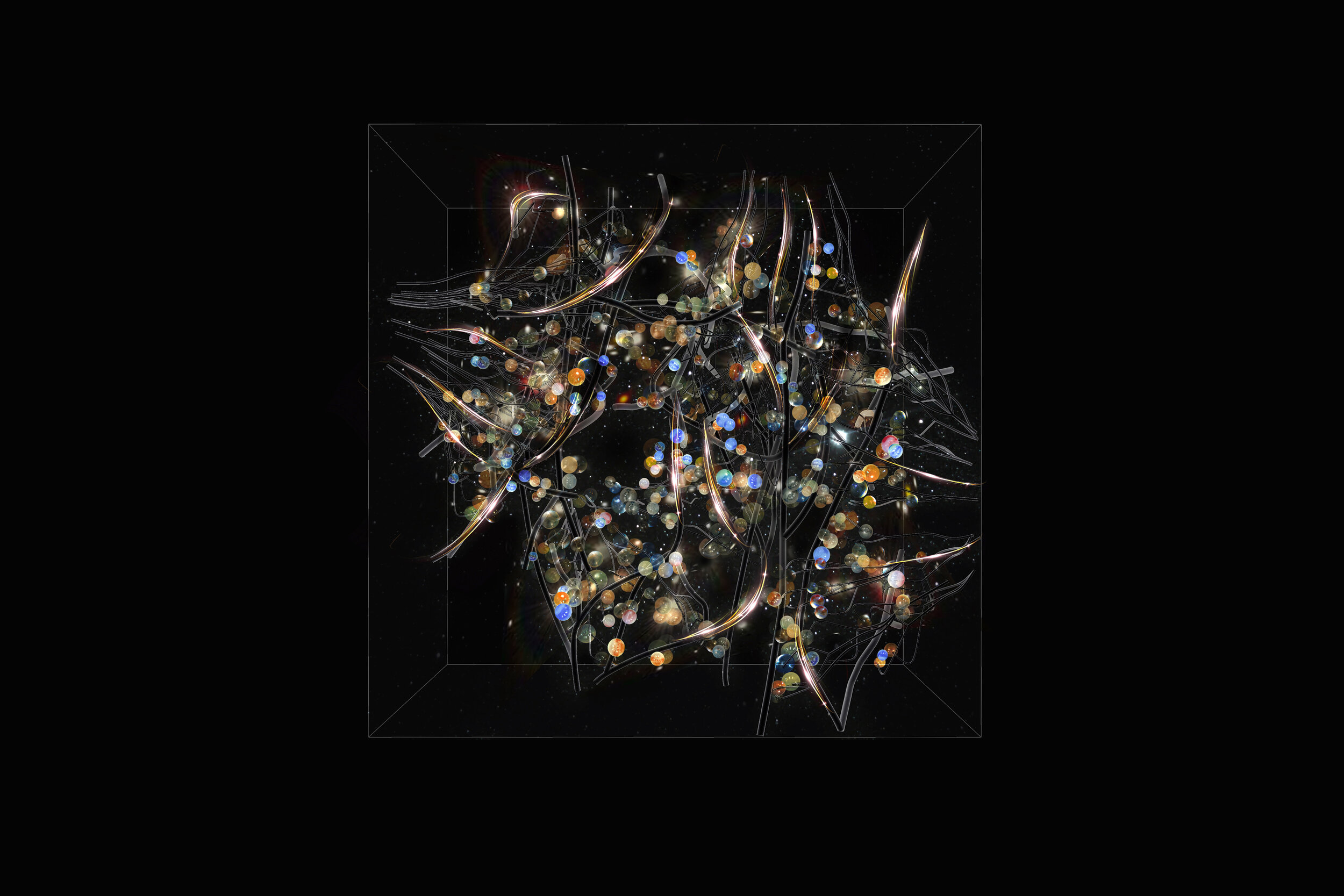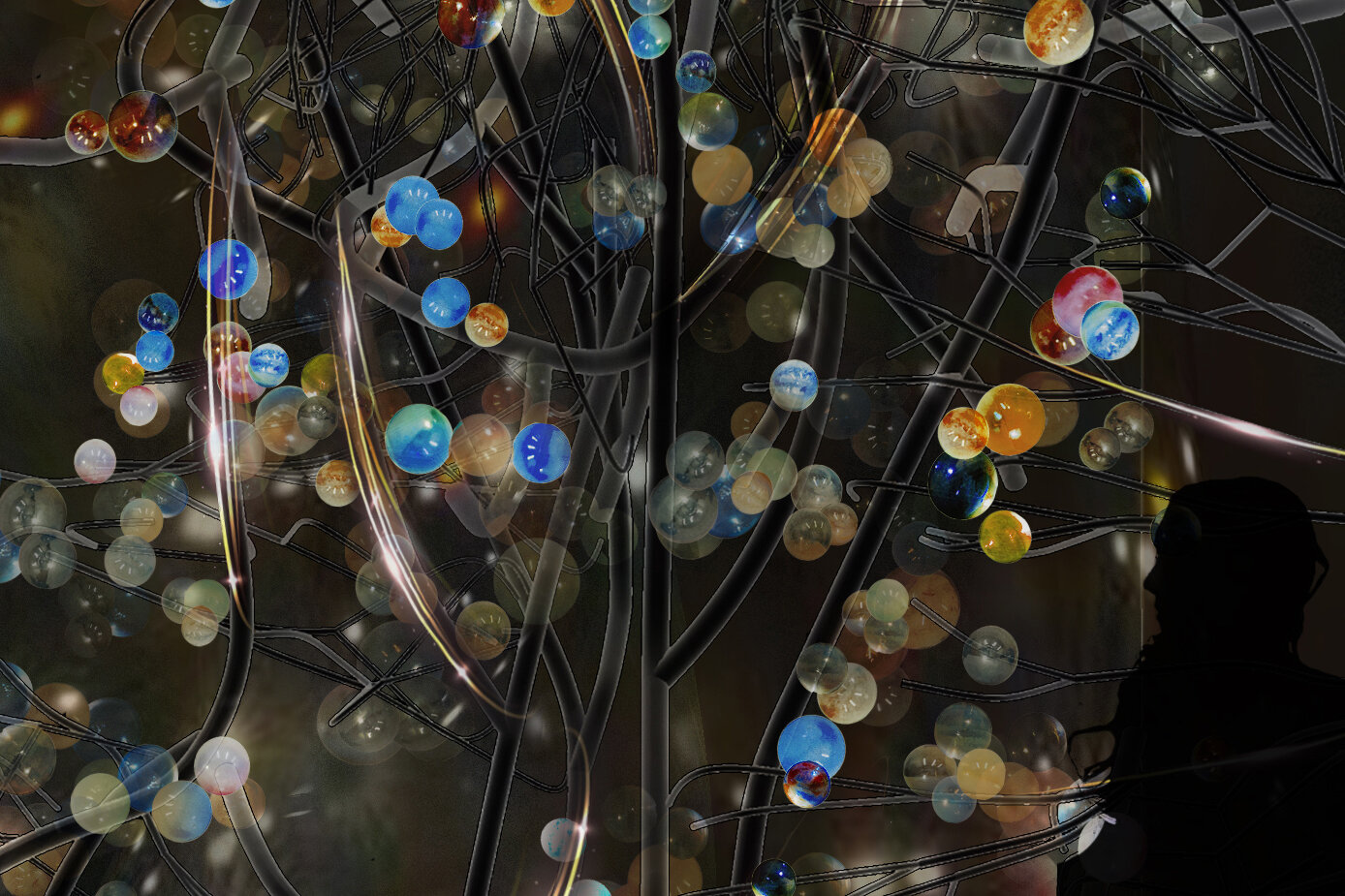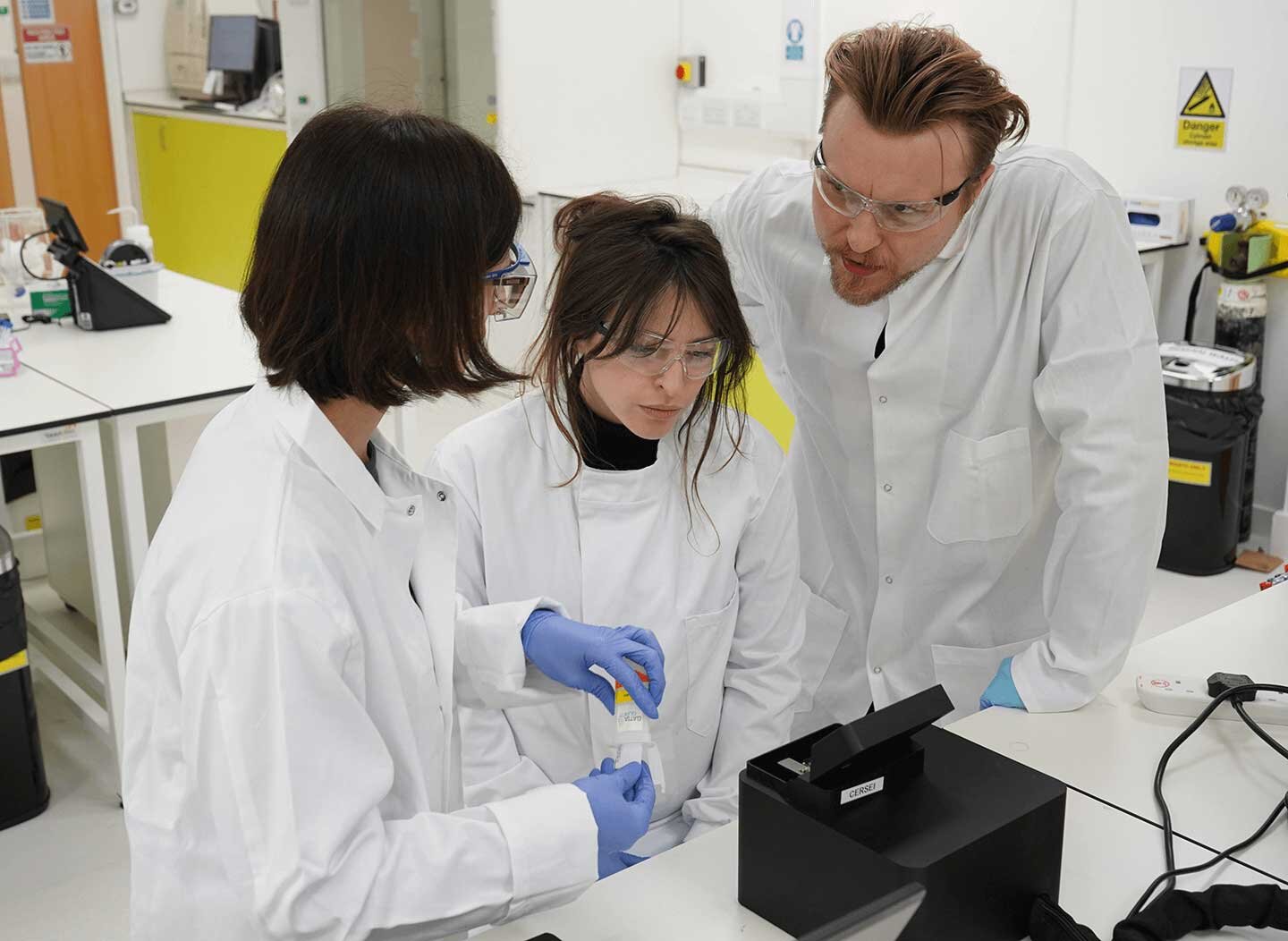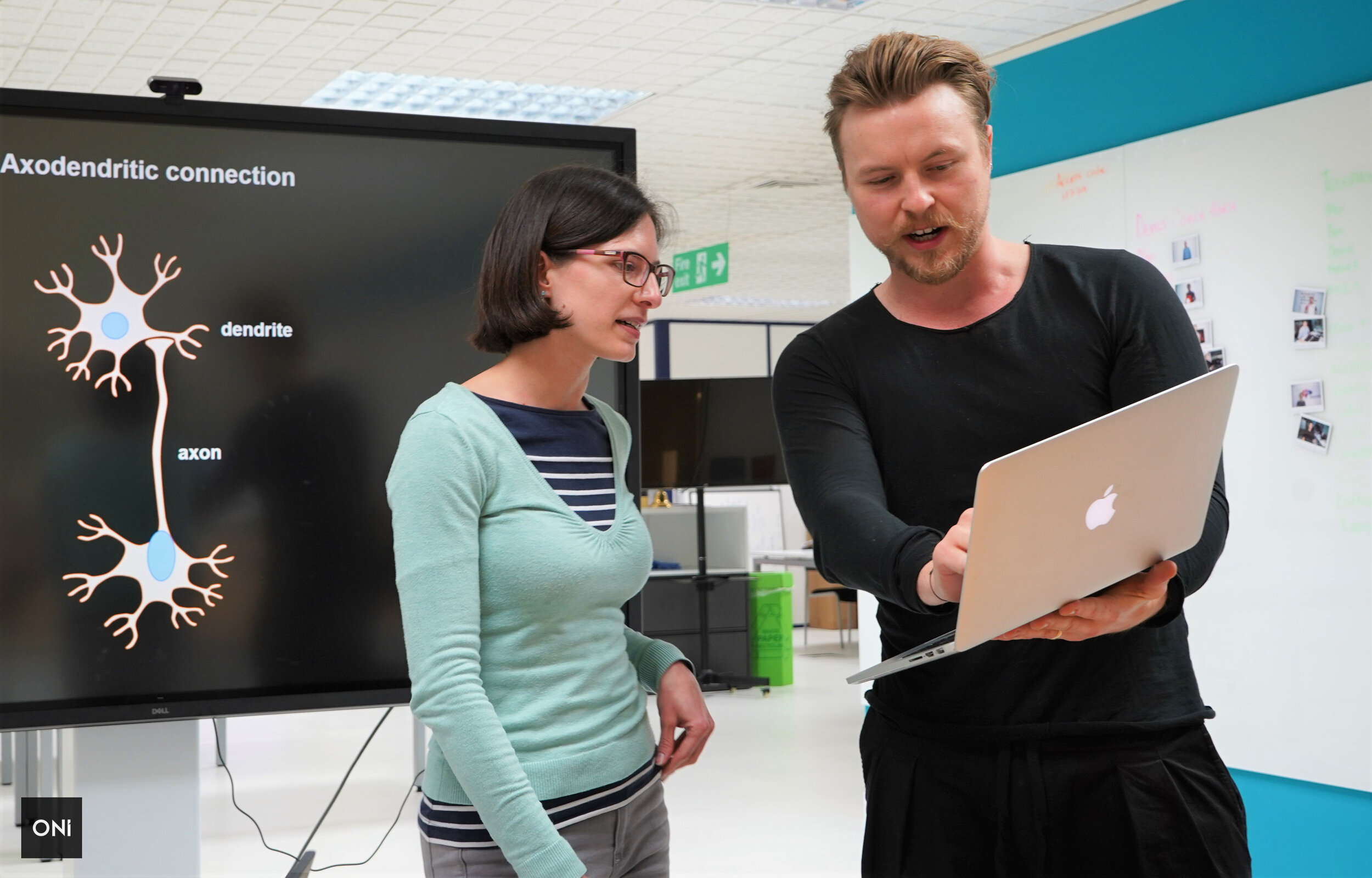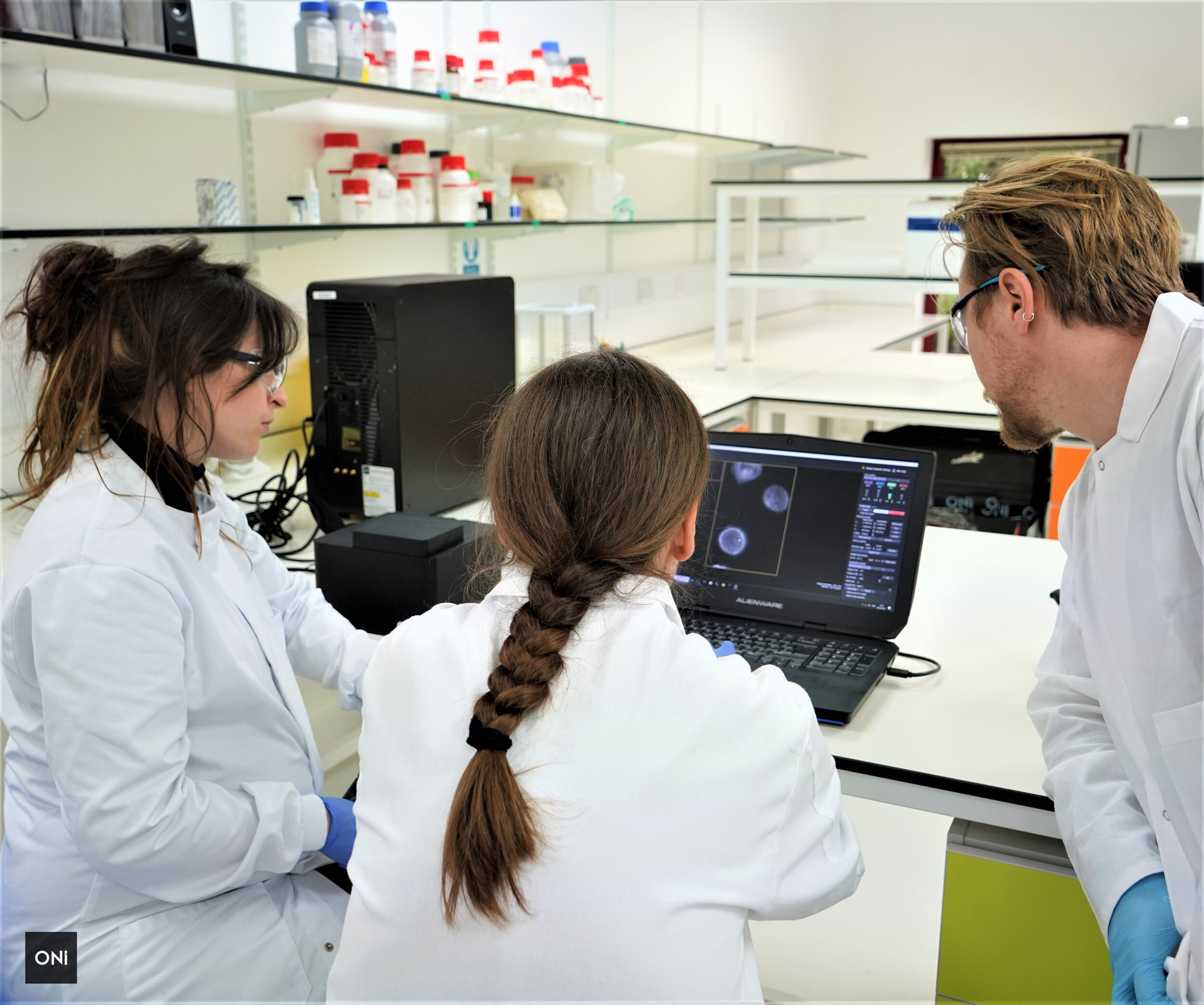Brain Gazing
‘Brain Gazing’ is a virtual neural network that can be interacted with like an instrument. Through meditative interaction the user can explore a neural architecture of generative synaptic activity that can be restructured through algorithmic forms of plasticity, giving rise to emergent scintillations of light and sound. This emergent brain-universe of scintillating lights scales and infinitizes in reference to altered states of consciousness. The artwork provokes questions about mind/brain/computer interfaces, asking how micro-processes in the brain and cellular automata are connected to the phenomena of consciousness.
The project was developed through the Oxford Nanoimaging (ONI) Artist in Residence Programme, in collaboration with the ‘Molecular Neuroscience Group’ at Cambridge University and the ‘Faculty of Brain Sciences’ at UCL, to explore neurological form and function in super-resolution, and more broadly reflecting on the nature of consciousness in relation to neurotechnologies.
1. Hippocampal neurons labeled for actin (orange) imaged by STORM and synapsin (blue) imaged by TIRF. (Credit: NeuroCytoLab.org)
Plasticity signifies the cosmic creativity inherent to the micro-elasticities by which the brain performs the self that we are from networks of biological causalities. “Plasticity, between determinism and freedom, designates all the types of transformation employed between the closed meaning of plasticity (the definitive character of form) and its open meaning (the malleability of form). It does this to such a degree that cerebral systems today appear as self-sculpted structures that, whilst being elastic or polymorphic, still tolerate constant self-working, differences in destiny, and the fashioning of a singular identity” - Catherine Malabou.
2. https://www.jneurosci.org/content/33/18/7742 RUB, LS Zellmorphologie und Molekulare Neurobiologie (Department of Cell Morphology and Molecular Neurobiology) @ruhrunibochum
For their function, neurons are dependent on the cell environment. In this image a hippocampus neuron of a mouse is surrounded by a perineuronal net (blue), with various structures of the synapse coloured red, green and yellow.
3. Cortical pyramidal neurons labeled with Tetbow from the RIKEN Center for Developmental Biology (Kobe, Japan)
“Why, in a world composed primarily of ontologically independent micro-realities, each able to access or know only things in its immediate microscopic environment, and each completely determined by micro-causal connections from its past, should there be ontological realities such as conscious thoughts that can grasp or know, as wholes, aspects of huge macroscopic collections of these micro-realities, and that can have intentions pertaining to the future development of these macroscopic aspects when that future development is already completely fixed, micro-locally, by micro-realities in the past?” - Roger Penrose
4. ‘The Glass Brain’: neuroscape.ucsf.edu/glassbrain | neuroscape.ucsf.edu | sccn.ucsd.edu | Team: Gazzaley Lab / Neuroscape lab
‘The Glass Brain’ is an anatomically-realistic 3D brain visualization depicting real-time source-localized activity from EEG signals. Each color represents source power and connectivity in a different frequency band (theta, alpha, beta, gamma). Estimated information transfer between brain regions is visualized as pulses of light flowing along the fiber tracts connecting the regions. The final visualization allows the user to fly around and through the brain with a gamepad while seeing real-time live brain activity from someone wearing an EEG cap.
5-7: Drawings of Purkinje neurons from the human cerebellum (1899, Cajal Institute, Madrid)
Santiago Ramón y Cajal’s freehand drawings—brain gazing through the microscope—bridged the space in-between science and art at the origin of modern neuroscience. Cajal won the Nobel prize for his Neuron Doctrine of synaptic messaging, which showed that neurons “touch” without touching; communicating across the void space of the synaptic cleft.
Consciousness is suspended in the void; at the interface of our brain-universe and it’s environment.

